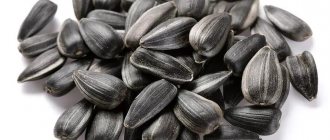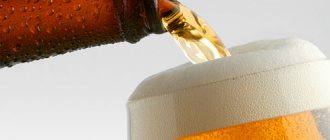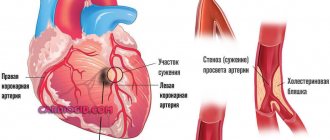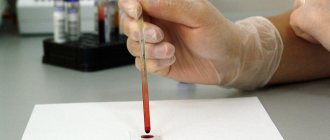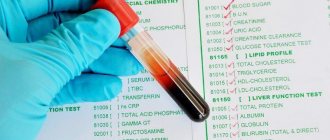The connection between alcohol and cholesterol (atherosclerosis) is beyond doubt. However, this connection is not so obvious - it would be a mistake to think that drinking alcohol always leads to an increase in cholesterol levels and only to an increase. On the contrary, moderate consumption of alcoholic beverages (such as high-quality red wine) - in quantities of no more than 1 - 2 servings per day for men and 1 serving for women - can lead to a decrease in total cholesterol (TC) and serve as a means of preventing cholesterol plaques and atherosclerosis.
Today it is common to talk about the possibility of preventing atherosclerosis with alcohol. Indeed, such prevention takes place: if you drink no more than 40 ml of strong alcoholic drinks, 150 ml of wine or 600 ml of beer per day. Moreover, with age, the metabolism of alcohol becomes less effective: by the age of 70, the dose is halved compared to the age of 50 (the preventive effect of alcohol consumption is assessed in middle-aged people, up to 45–50 years of age).
Alcohol for atherosclerosis can be used by both men and women. However, in women - due to their (usually) lower weight and poorer alcohol metabolism - the acceptable daily dose is approximately half that of men. If for men, in order to prevent the occurrence and development of atherosclerosis, 1 to 2 alcoholic drinks per day are allowed, then for women we are talking about one and only one serving. Pregnant women are not recommended to drink at all, and over the age of 70 - for both men and women - it is better to stick to the lower limit of moderation.
See also:
Consequences of high blood cholesterol in women
Causes of high blood cholesterol in men
How does high cholesterol affect pregnancy planning?
Myth #1: High cholesterol is not hereditary.
In fact : It is transmitted. Familial hypercholesterolemia is a genetic disorder caused by a series of mutations in the low-density lipoprotein receptor gene on chromosome 19. This genetic defect affects the liver's ability to effectively regulate the level of "bad" cholesterol, that is, low-density lipoprotein (LDL). This leads to increased overall cholesterol levels and can provoke a risk of cardiovascular disaster (heart attack, stroke).
Different forms of the disease are inherited. In the case of autosomal recessive inheritance, a child who has received two pathological genes from each parent will become ill, and then hypercholesterolemia will manifest itself in childhood. This condition of the child requires mandatory drug treatment. With an autosomal dominant type of inheritance of the disease, there may be two variants of the manifestation of the disease. When a child receives one pathological gene from a parent, the disease is milder and appears later. In another case, he inherits two pathological genes (the disease occurs in early childhood and is more severe). In addition to these forms, there are forms of primary hypercholesterolemia of other types of inheritance and acquired hypercholesterolemia. They are easier to treat.
To exclude genetic risks, you can conduct an analysis for the genetic risk of atherosclerosis and coronary artery disease, predisposition to dyslipidemia.
Cholesterol winners. New medications have appeared that can save you from heart attacks. Read more
Myth No. 2. Cholesterol enters the body only through food.
Actually : no, not only. 80% of cholesterol is synthesized in the body. Therefore, giving up foods containing cholesterol will bring nothing but problems. Every day, the body synthesizes approximately 1000 mg of cholesterol, which is necessary for digestion, cell development, and the production of vitamins and hormones. Cholesterol imbalances in the body are primarily caused by internal problems rather than dietary deficiencies. First of all, the determining factors are:
- heredity; - liver and kidney diseases; — infections; - overweight and obesity; - insulin resistance; — diabetes mellitus and prediabetes; - taking medications; - hormonal disorders (including hypothyroidism - decreased functional activity of the thyroid gland); - age; - unhealthy diet.
Regarding the last point, an increase in cholesterol levels is possible with excessive consumption of foods high in saturated fats (butter, fatty meats, eggs, cheese) and trans fats (fried foods, all fast food). But existing disorders in the body always matter: these are the above-mentioned malfunctions and problems in the functioning of the liver and pancreas, and disturbances in the intestinal microbiota.
Promises of fans of the theory
Fans and followers of the theory of daily ethanol intake in small quantities claim that the beneficial effect can be noticed a week after the start of its use. The benefits will be:
- in reducing headaches,
- normalization of appetite,
- reducing weakness and feelings of fatigue,
- easy awakening in the morning,
- The body will gain strength and it will be easier to bear the load.
This effect is desirable for many people. And they will not be embarrassed by the daily morning intake of strong alcohol. The key is to maintain the dosage and use the same type of drink. But is everything so simple and good? Let's take a look at the opinions of opponents of the theory of treating the body with alcoholic drugs.
Myth No. 3. Cholesterol has a secondary function in the body.
Actually : no, it's not. Cholesterol is an essential component of fat metabolism and a structural part of hormones, such as estrogen and testosterone, vitamin D, bile acids necessary for the digestion of fats, and it is used to build cell membranes. In the blood, cholesterol is in a free state and bound to proteins. Low-density lipoproteins (LDL) - complexes of cholesterol with less protein ("bad" cholesterol) - cause inflammation in blood vessels! Their level increases in the blood with metabolic disorders leading to atherosclerosis.
High-density lipoproteins (HDL) - high-protein complexes of cholesterol ("good" cholesterol) - have protective properties for blood vessels.
The norm for HDL cholesterol is 1.2 for men, 1.5 for women. A decrease in indicators by 20% several times (3-4) increases the risk of developing atherosclerosis. An increase in indicators is observed against the background of intense physical activity, under the influence of drugs that reduce the overall level of lipids.
The normal LDL level is less than 3.5 mmol/l for healthy people. In risk groups, those with existing heart and vascular diseases, or those who have already had a heart attack or stroke, the norms are much lower and are determined individually. An increase in LDL concentration (above 4.0 mmol/l) is possible while taking non-selective beta blockers, diuretics, and contraceptives. A decrease in LDL can be observed as a result of fasting, lung diseases, anemia, and malignant neoplasms.
Don't be afraid of fat. How to eat to get rid of atherosclerosis? More details
What dose of alcohol is considered safe?
According to the recommendations of the World Health Organization, men can drink up to 10 liters of pure alcohol per year. This dose is considered safe for health. Russian narcologists adhere to more strict limits: up to 8 liters per year with mandatory abstinence from alcohol 3-4 days a week. At the same time, women are allowed to drink one third less alcoholic beverages. This can be explained by the fact that for the weaker sex, alcohol consumption is associated with great risks. There is less water in the female body, so the concentration of alcohol in it, and therefore toxic substances, will be greater. In addition, the body of the fairer sex produces fewer enzymes involved in the breakdown of alcohol, so it is excreted more slowly.
Myth No. 4. Hypercholesterolemia cannot be treated
In fact : no, it is actually curable. Hypercholesterolemia can be treated, including familial hypercholesterolemia. For this purpose, complex therapy methods are used. First of all, statins and fibrates are prescribed - special lipid-containing drugs that reduce the amount of cholesterol in the blood, inhibit its formation in the liver, and reduce absorption in the intestines.
Modern drugs have appeared - monoclonal antibodies (PCSK9 inhibitors), they are administered several times a month and are used when standard therapy is ineffective.
Non-drug methods include diet and exercise to normalize weight and prevent obesity, giving up bad habits (drinking alcohol, smoking).
Alcohol and cholesterol plaques
There are no effective foods, folk remedies or medications for plaque in blood vessels. This is especially true for alcohol. The cholesterol plaques themselves are relatively young (“soft”, without calcium deposits) and old (after the process of calcification). Both can break off and clog blood vessels and capillaries. Moreover, young atherosclerotic plaques form blood clots (thrombi), to prevent which, for example, drugs such as warafine and aspirin are prescribed (more details: aspirin for cholesterol).
Does alcohol dissolve cholesterol plaques?
Drinking alcohol has no effect on cholesterol plaques: alcohol cannot dissolve them (just as no drugs or products can do this at all, with the exception of omega-3 acids, but even those must be drunk for 1 - 1.5 years in order to reduce the number of plaques by 5 - 15%). It cannot prevent the formation of blood clots.
Myth No. 5. You don’t need to do cholesterol tests until you are 40 years old.
In fact : no, you can’t treat yourself like that. It is necessary to control the level of cholesterol, HDL, LDL, and triglycerides from the age of 25. A sedentary lifestyle, unhealthy snacks, addiction to alcohol, which has a damaging effect on the liver, and smoking can lead to increased cholesterol levels. It is important to understand that hypercholesterolemia (level more than 5.2 mmol/l) quadruples the risk of developing atherosclerosis, coronary heart disease, and arterial hypertension.
To find out whether lipid levels are normal, it is enough to take a biochemical blood test - a detailed lipid spectrum:
- Cholesterol;
- Triglycerides;
- HDL cholesterol;
- LDL cholesterol.
Keeping your cholesterol under control and getting your blood tested regularly is an important point in maintaining your health.
Bad and good cholesterol. What you need to know about this important connection Read more
True statements about cholesterol
Elevated cholesterol levels in the blood provoke atherosclerosis
That's how it is here . An increase in cholesterol concentration—hypercholesterolemia—is a reliable factor in the development of atherosclerosis. And this is a direct path to stroke, heart attack and deterioration in quality of life and life prognosis.
Exercising can lower bad cholesterol levels
Yes, that's a fact. If the risk of developing cardiovascular diseases and hypercholesterolemia in the family line is minimal, then playing sports will help reduce “bad” cholesterol levels. For example, it has been proven that after three weeks of exercise in women with type II diabetes, low-density lipoprotein (LDL) levels decreased by 21% and triglyceride levels by 18%.
However, you should not experiment with physical activity if you have been diagnosed with peripheral artery disease, angina pectoris, or high levels of “bad” cholesterol. In this case, it is first recommended to take medications, and then exercise.
There are foods that lower blood cholesterol levels
This is true . With an increased risk of developing hypercholesterolemia, it is reasonable to limit foods containing saturated fats (fatty meats, butter, eggs, cheese) to a physiological minimum. This can actually lead to a reduction in total cholesterol levels in the blood.
Polyunsaturated fatty acids are useful in this case. But you need to talk about everything with your doctor so as not to harm your health.
For example, omega-6 fatty acids have been shown to lower levels of “good” cholesterol (HDL). They are found in oils: flaxseed, grape seed, sesame, peanut, and corn. Many people consider these types of oils to be healthier than sunflower oil. In fact, a healthy alternative is olive oil, which helps lower cholesterol and LDL levels without lowering HDL levels. Olives and fatty sea fish have the same effect.
How does alcohol affect atherosclerosis?
The effect of alcohol on vascular atherosclerosis is recognized by modern medicine as positive, but we should not forget that (for ethical reasons) randomized controlled clinical trials have never been conducted. Moreover, the effect of alcohol on atherosclerosis has always been of the nature of observational studies aimed at middle-aged people, mainly married and fairly wealthy (which in itself are favorable factors).
However, some studies still suggest a positive effect of alcohol on the body in atherosclerosis. For example, red wine (as well as purple and red grape juice) contains resveratrol and some antioxidants. When coating stent surfaces with extracts based on them, it was possible to reduce inflammation and restenosis (stent clogging). The research is currently being done on animals and has not yet reached humans (standard chemotherapy drugs are used), but perhaps a glass of red wine after stent surgery could be considered beneficial.
Is it possible to drink alcohol if you have high cholesterol?
Usually yes, you can drink alcohol, as long as it is in moderation and if you do not use statins (lipid-lowering drugs). With regular consumption of large doses of alcohol, complications on the liver are inevitable, in any case. Therefore, always and everywhere we are talking about moderate consumption of alcoholic beverages.
